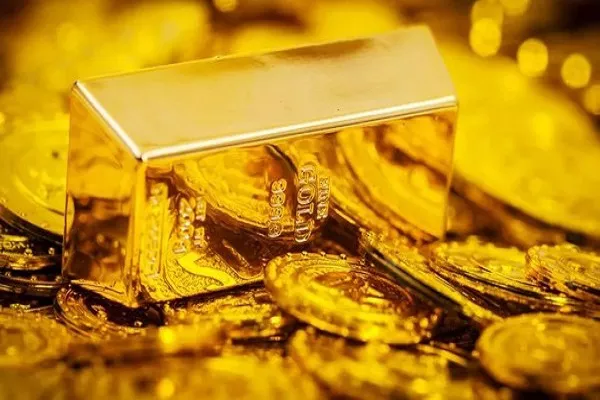The price of gold has reached an unprecedented high of $2,600 per ounce, marking another significant milestone in a year characterized by remarkable gains for this safe-haven asset. As gold continues to attract investors, it has surged over $30 in trading today, following a period where it hovered just below the $2,600 mark at $2,598-$2,599 for an extended time.
In the United Arab Emirates, the price for 22K gold is currently set at Dh290.75 per gram. This price is expected to soon reflect the latest increases seen in global bullion markets, further emphasizing the growing demand for gold as a secure investment.
Impact of Recent U.S. Federal Reserve Decisions
Market fluctuations in gold prices were anticipated following the U.S. Federal Reserve’s decision to cut interest rates by 0.5 percent. In the immediate aftermath of this announcement, gold prices dipped to levels slightly above $2,560. However, the yellow metal quickly rebounded, resuming its upward trajectory and reaching the $2,600 mark.
As of the latest trading session, gold is currently valued at $2,605 per ounce, solidifying its status as a key player in global markets.
Consumer Reactions to Rising Gold Prices
For consumers, the surge in gold prices presents a significant challenge. Prices above $2,500 per ounce (or Dh280 per gram for 22K gold) create a psychological barrier for many buyers. Regular investors, who typically purchase gold for asset diversification, are now re-evaluating their strategies.
Many have started to reduce the frequency of their purchases, opting instead for monthly installment schemes that allow them to accumulate smaller amounts of gold over time. This shift indicates a broader trend among consumers who are seeking to manage their investment strategies more conservatively amid rising prices.
The Broader Economic Context
The rise in gold prices is not merely a market anomaly but a reflection of broader economic conditions. Investors often turn to gold during times of uncertainty, and with various geopolitical and economic factors at play, the demand for gold as a safe-haven asset has been amplified.
Historically, gold has served as a hedge against inflation and currency fluctuations. With central banks worldwide adopting accommodative monetary policies, the appeal of gold continues to grow, attracting both individual and institutional investors.
Future Outlook for Gold Prices
Looking ahead, analysts are keenly observing market conditions that could further influence gold prices. Factors such as inflation rates, interest rates, and geopolitical tensions will continue to play a crucial role in shaping the market.
As the global economy navigates uncertainty, gold’s status as a safe-haven asset is likely to remain robust. Investors are encouraged to keep an eye on market trends and consider their investment strategies carefully.
Conclusion
The recent surge in gold prices past $2,600 per ounce is a testament to the ongoing demand for this precious metal. As consumers adapt to the new price landscape, the importance of gold as a stable investment remains evident. With economic conditions continuously evolving, gold’s allure is expected to persist, making it a focal point for both seasoned investors and newcomers alike.
As the year progresses, the gold market will undoubtedly face new challenges and opportunities, further solidifying its place in the global investment landscape.

